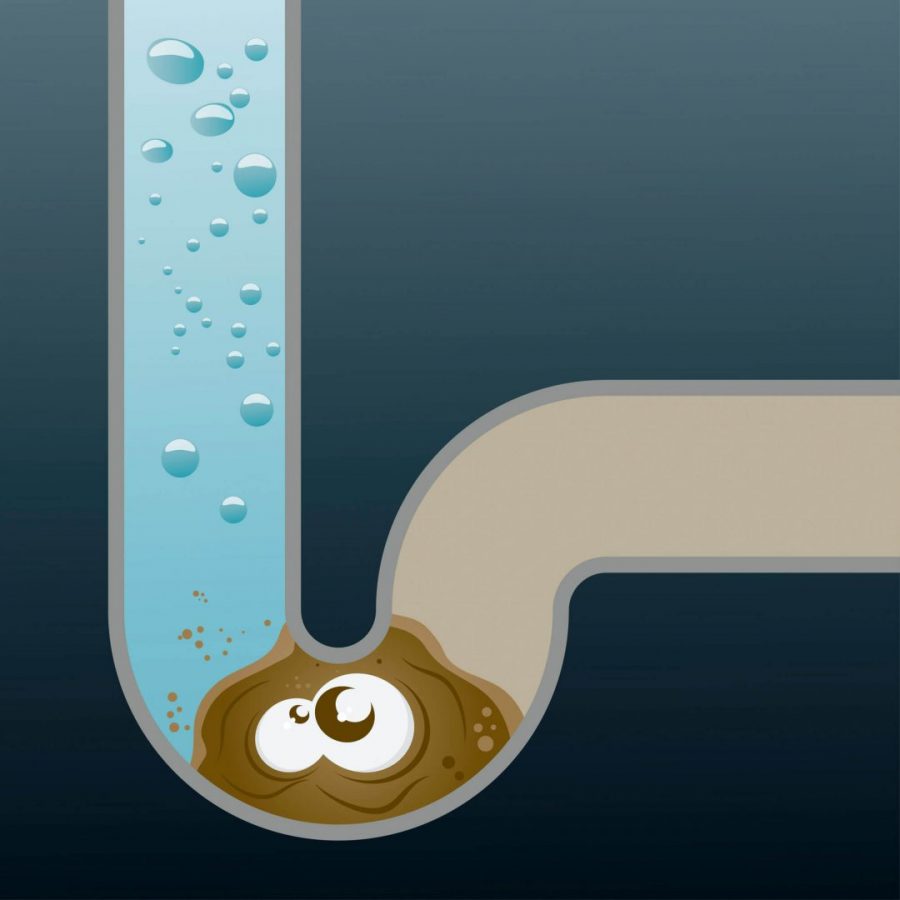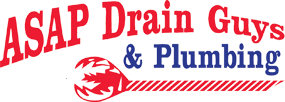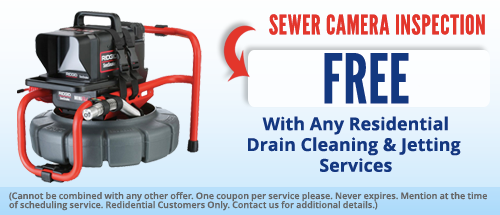
Water comes in to your faucets and appliances under pressure, but drains and toilets only have gravity to keep them flowing. So it doesn’t take much to slow them down or cause them to stop draining all together and causing a backup. In fact, even a sewer line drainage without enough slope can lead to reduced flow, accumulated grease and debris, and big problems.
Drain vs Sewer “Main”
Sinks, showers, and tubs have drain pipes of around 1 1/2 inches in diameter. Along with toilets these join together, eventually meeting up to a single main sewer line running from the building out through your cleanout to city services at the street. You can think of this plumbing in your home as a tree with your fixtures as leaves, drain lines as branches, and the sewer line as the trunk. For homes that main line is typically 4 or 6 inches in diameter.
If you want to get technical, the city pipe at the street is the sewer main and can be a foot in diameter or more. The line from your home or business to the street is more properly called a lateral.
Sewer Line Drainage Problems
Without water pressure to force things through quickly, sewer and drain lines are prone to a host of problems.
- Foreign objects can get flushed down the toilet (especially if you have toddlers!) then easily become stuck in the sewer line.
- Grease often solidifies and lines the insides of pipes as it cools. The open passageway becomes smaller and smaller, and can close completely. That grease also traps food debris.
- In addition to metal pipes corroding, they and other types can develop mineral scale. The resulting roughness makes grease and debris accumulation all the more likely.
- Settling soil can reduce the drainage slope or cause dips (“bellied” sewer lines). That slows the flow and also speeds up grease and debris deposits.
- Tree roots can force their way in through joints and cracks in older types of sewer lines.
And More Problems
Additionally corrosion, cracks, and separated joints cause leaks that often result in an unsanitary mess in the lawn or even indoors. Worse still, clay and cast iron pipes can completely collapse.
Main or Drain?
We’re often asked how to tell the difference between a drain clog and a sewer clog. Here are the most important clues that it’s the main sewer line.
- Are several drains slow-running or backed up?
- Is the backup at the lowest fixture or a floor drain?
- Do you hear gurgling when a sink, tub, or shower aren’t in use?
- Does water back up in the shower when a toilet is flushed?
- Is a toilet not flushing well?
- Does a sink back up when the clothes washer is draining?
- Does a toilet make sounds when you’re doing laundry?
Solutions for Sewer Line Drainage Problems
The first line of defense for both sewer and drain problems is a trusty plunger. Next come drain snakes and augers. They’re simply larger for cleaning sewer lines as compared to drains.
For tough problems it’s a good idea to have a video camera inspection. A sewer line video can identify the location and nature of an obstruction as well as check for corrosion, cracks, bad joints, bellies, and so on. Knowing the condition of the entire line is a big help in deciding the best way forward.
That could be hydro jetting for an absolutely thorough cleaning, a spot repair, or a sewer line replacement. Depending on the length and path of the line modern technologies such as pipe bursting or pipe lining can be a very desirable alternative to the traditional method of digging a long trench to access the failed line. Modern materials such as HDPE mean the replacement will last decades (and perhaps even be guaranteed for decades) with no joints to let in roots, no metal to corrode, and smooth surfaces to resist scaling and other deposits.
Sewer Line Drainage – ASAP Drain Guys & Plumbing
We’re A+ BBB rated and have been serving San Diego since 2001. Learn more or contact us any time.


